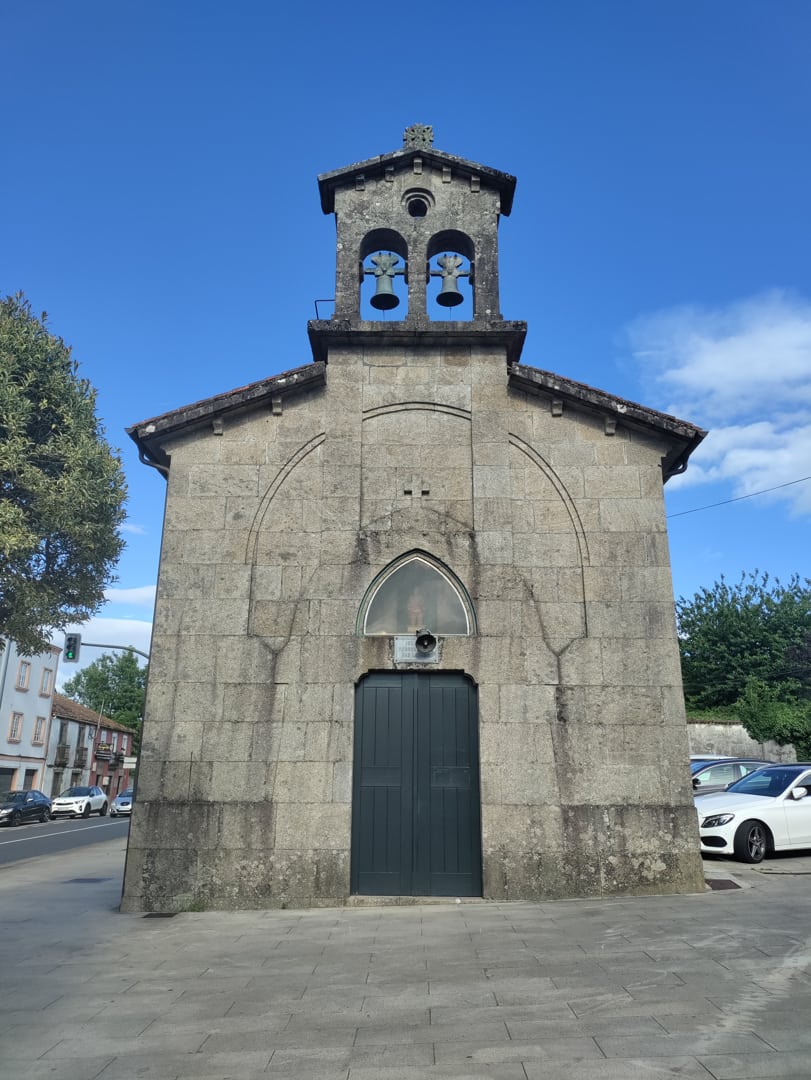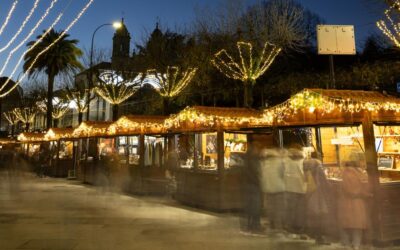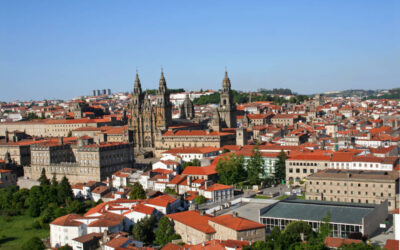Pilgrims arriving in the city through the San Lázaro neighborhood will find on their way to the Cathedral of Santiago a very special religious building: the San Lázaro Church.
Church of San Lázaro
.
This temple, built in 1924 by the Santiago architect Jesús López de Rego, is a beautiful modernist style building, which stands out for its unique design and elegant combination of materials.
It has a small nave with pointed arches, buttresses and a rear sacristy, which defines the interior space of the church. In addition, it has a side door that allows direct access from the street, facilitating the entry of the faithful.

Its facade is built with granite masonry, which gives it a solid and durable appearance. The main elements of the building, as well as the contour of the openings, are also made of this noble material. For its part, the rest of the facade is built with ashlar, a type of stone that is characterized by its more rustic and natural appearance.
One of the most outstanding parts of the temple is its bell tower, located on the main façade. It is topped with two bells that add a touch of charm and tradition to the whole. With their peculiar sound, they call the faithful to prayer and mark the rhythms of religious life.
The church, as its name indicates, pays homage to its patron saint, Saint Lazarus. He is known as the patron saint of the sick and lepers. According to Christian tradition, he was a man who suffered from a serious illness. Jesus heard the news, but when he went to see him he had already been in the tomb for four days.
When he arrived, he asked them to remove the stone that closed the entrance to the tomb and raised Lazarus with a miracle. This was one of the most significant events in the life of the Nazarene and has been the subject of deep reflection within Catholicism.
St. Lazarus’ story of faith, healing and compassion makes him a model of hope and strength for those facing illness and hardship in their lives. Devotion to this saint is celebrated in many parts of the world.
This temple is a meeting and prayer point for the faithful, a testimony of faith and a sample of Galicia’s legacy. It celebrates mass every Sunday and holidays at 11:30 a.m. so that those who wish can witness this religious rite.






